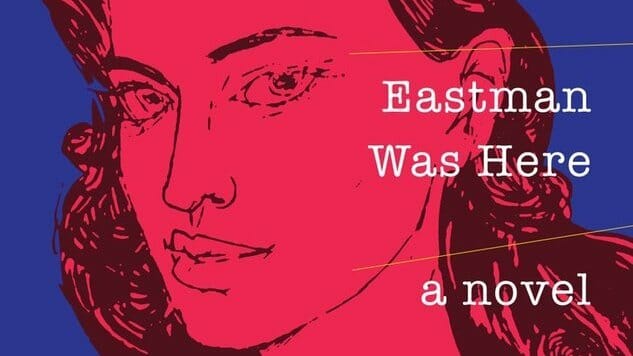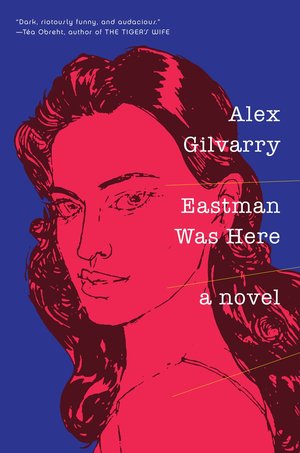
You don’t have to look far to find Great Male Narcissists—a term coined by David Foster Wallace—of the type who star in Eastman Was Here. Hypermasculine worship, the kind expressed in MAGA hats, white polos and khakis, is very real. And Alex Gilvarry examines this phenomenon through the lens of delicious, biting, xenomorph-blood-acidic satire in his new novel.
Eastman Was Here follows Alan Eastman, a washed up author who turns to Saigon for the swan song that will save his career and his marriage. Set in the immediate aftermath of the Vietnam War, the book highlights the type of authors who have cast a spell on us at some point—manly men boasting manly emotions, who dissolve their Pain in drugs, women and prose. These are writers descended from Hemingway’s poisonous line, but with a more urbane spin, like Roth, Updike, Irving, Mailer and their peers. You know, the stereotypical novelists who were the accolade-winning dicks in the American post-war literary scene.
 We’ve all been suffering in their long, dark shadows ever since.
We’ve all been suffering in their long, dark shadows ever since.
Only now, it’s not only the comparatively minor crime of literary sexism and suffocation that we are suffering. The stakes are higher in a game played not only with words, but with Executive orders, with tiki torches, with blood. There is a reason masculinity is often described as “toxic,” and it’s because that is truly the most apt word for it. Like botulinum toxin, it paralyzes until one can no longer breathe. Paracelsus, the Swiss physician who helped found the field, laid down the most famous tenant in toxicology: sola dosis facit venenum, “the dose makes the poison.” With Trump’s election echoing in the sludge-filled trenches inhabited by the worst attitudes of men, the dose has become lethal.
All of which makes Eastman Was Here equal parts distressing and cathartic. Distressing in that A) Gilvarry’s satire is so spot on it can be uncomfortable (which is to its credit), and B) there is doubtless some aspiring writer out there who is reading about poor Eastman’s successes and nodding his head yes. He is, of course, a lost cause until he finds himself anyway, but the fear still creeps.
But the catharsis! The joy comes from knowing that this fear is nothing like Eastman’s, nothing like the horror he feels in the setting of his own personal sun. We watch him stumble, rage, stub his ego. It’s all played so straight—almost too straight; trust is important here—and through the eyes not of Eastman, who is incapable of seeing himself, but through those around him, especially Anne Channing, the arch war correspondent and protagonist of the novel.
The real question is, can we enjoy Gilvarry’s vicious joke in a moment in time wherein the Fragile Male Egos he’s mocking are bellowing their death rattle? Can we enjoy the righteous pressure on the sinking porcelain porcine while King Pig himself is on the throne? Is the toxicity level too high for venom to be effective? Or is now the perfect time?
I suspect the answer to these questions depends on the reader. As a cis-straight-white-male-narcissist myself, I thrill at Gilvarry’s thorough and surgical dismemberment of my peers. Where I anyone else, however, I suspect I’d feel that Eastman’s fate isn’t harsh enough. Even now, part of me prays that he had found his tortured brain aerosolized in Vietnam.
B. David Zarley is a freelance journalist, essayis, and book/art critic based in Chicago. A former book critic for The Myrtle Beach Sun News, his work can be seen in Hazlitt, Sports Illustrated, The Chicago Reader, VICE Sports, The Creators Project, Sports on Earth and New American Paintings, among numerous other publications. You can find him on Twitter or at his website.